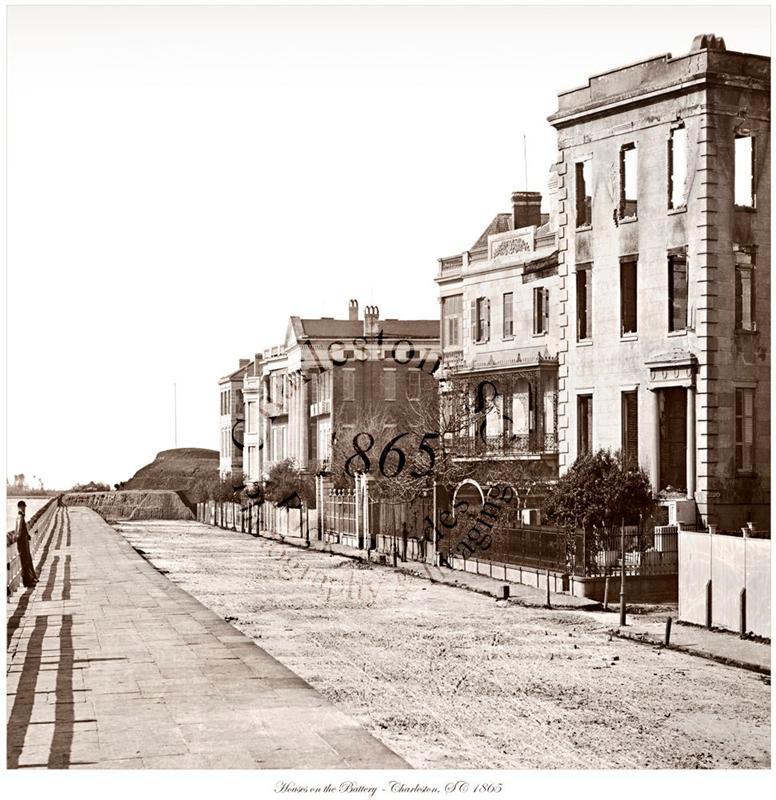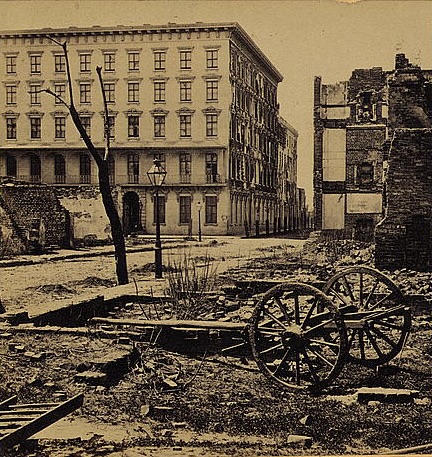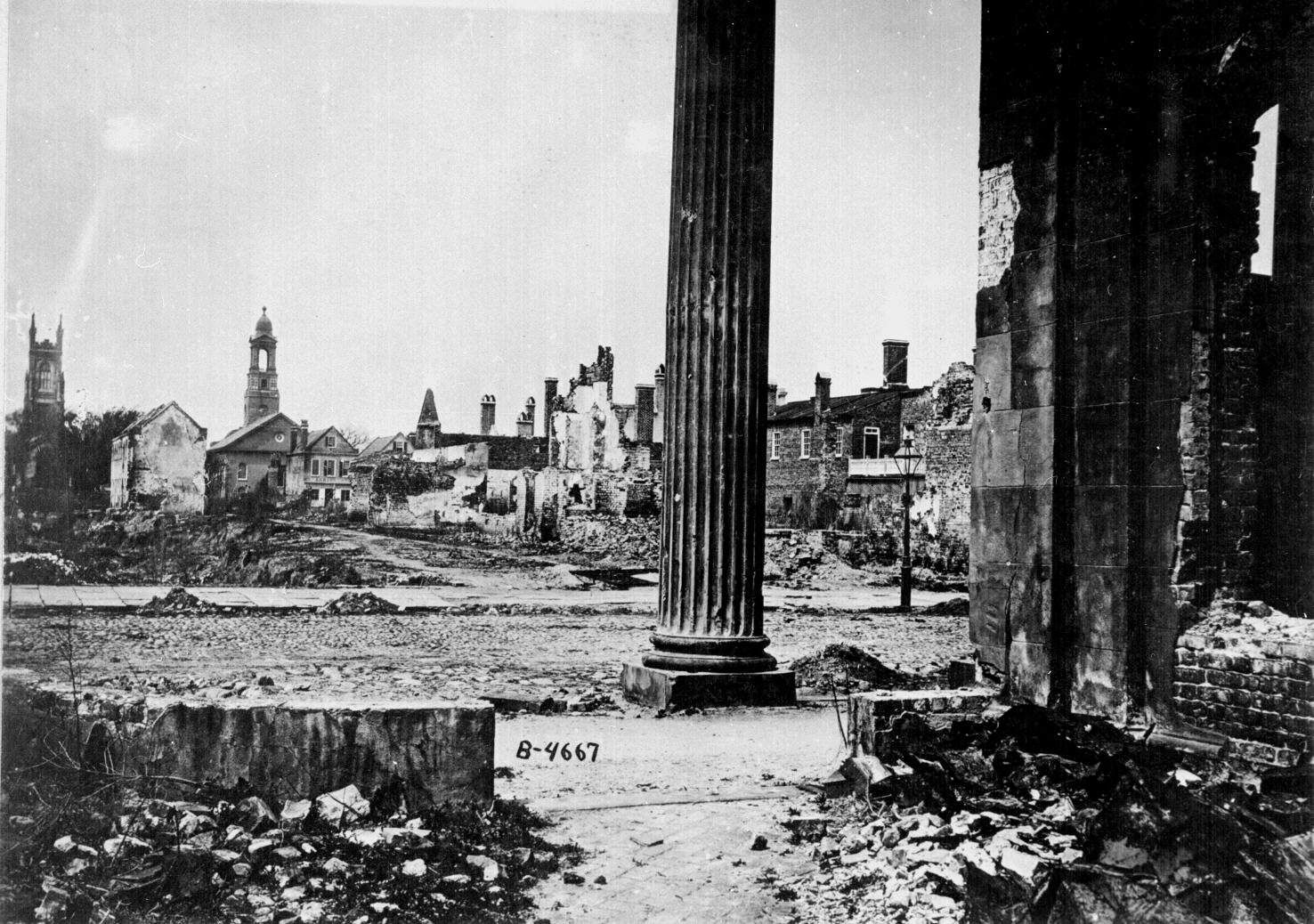THE FALL OF CHARLESTON
Feb. 17/18, 1865
One can hardly imagine what the night of Feb. 17, 1865, must have been like in Charleston. Hours before surrendering to Union troops, the city was in chaos as unchecked fires, deafening explosions, looting, rampage, and fear overwhelmed buildings and residents alike.
The Civil War - at least in Charleston - was lost.
After capturing Savannah in December 1864, Union Gen. William T. Sherman marched his troops to Columbia rather than toward Charleston as expected, a decision undoubtedly made for militarily strategic reasons, such as cutting two of South Carolina’s three railroad lines along the way.
Yet Sherman also was aware that Charleston was by then only a shadow of its former self, after the Great Fire of 1861 destroyed a third of the city and a 587-day Federal bombardment.
Believing that moving troops to defend the state’s capital was more critical than saving a city that seemed undefendable, on Feb. 15 Confederate Gen. P.G.T. Beauregard called for an evacuation of the city, a decision that sealed Charleston’s fate.
Nearly everyone who could had evacuated by Feb. 17, leaving only the poor, elderly, enslaved, sick, injured, and otherwise hapless here that cold and breezy February night. Civilians sheltered north of Calhoun Street, out of the cannons’ range. No one other than a few remaining looters could be found on the streets south of that.
Beauregard’s orders were to leave nothing behind that could aid the enemy. Everything that could be was loaded onto the last train out of the Northeastern Wilmington Railroad Depot at the corner of East Bay and Chapel streets. Anything that couldn’t be put on the train, Sherman said, should be destroyed.
Confederate soldiers scuttled their own ships in the harbor. They spiked and blew up the large cannons at which they had been stationed to defend the city. One, at the intersection of East Battery and South Battery, exploded with such force that half of it shot right through the DeSaussure House at 1 East Battery, and the other half crashed into the roof of the Roper House at 5 East Battery, pieces of which remain in its attic today.
Throughout the city, warehouses full of cotton and rice were set afire, including a major conflagration near Lucas Street (now part of the MUSC campus) that was filled with 1,200 bales of cotton. Other bales were piled up on Marion Square and set on fire. Confederates burned the Ashley River bridge as well, creating flames that raced out of control across the northern edge of the city all the way to the Cooper River.
As dark smoke curled into the sky, rumors began to circulate that Union troops had already taken the city, causing even more panic.
Soon after dawm the next morning, fire reached the Wilmington Depot. A cache of gunpowder there exploded, killing some 200 starving people, mostly women, children and the enslaved, and seriously injuring dozens of others. Nearly four times as many Charlestonians died in that single blast than the 53 who were killed in the city as a direct result of Federal shelling throughout the four years of Civil War.
At 9 a.m., Charleston’s Mayor Charles Macbeth dispatched City Councilman George W. Williams to Union Brigadier Gen. Alexander Schimmelfennig with a message surrendering the city, saying: "The military authorities of the Confederate States have evacuated the City. I have remained to enforce law and preserve order until you take such steps as you think best."
According to author Walter J. Fraser, Lt. Col. Augustus G. Bennett and about 25 soldiers from the 52 Pennsylvania Volunteers and the Third Rhode Island Artillery docked at near the Old Exchange Building about an hour later, where they cautiously entered the rubble-strewn city.
Even as they began to put out fires throughout the city, Federal troops took possession of the Arsenal (now St. Luke’s Chapel at Ashley and Bee streets), which the S.C. militia seized after Union troops moved to Fort Sumter in 1860. The U.S. flag was quickly raised there and at the Customs House at the east end of Broad Street. Forts Sumter and Moultrie were secured shortly thereafter.
One northern reporter portrayed Charleston’s fall that night as a “City of ruins, – silent, mournful, in deepest humiliation ….” Jacob Schirmer, a locally prominent owner of a barrel-making business who helped establish St. John’s Lutheran Church on Archdale Street, was one of those still in the city that night. Entries from his diary declaimed “total ruin is staring us in our faces… We have writ our own destruction….”
And so it seemed.





